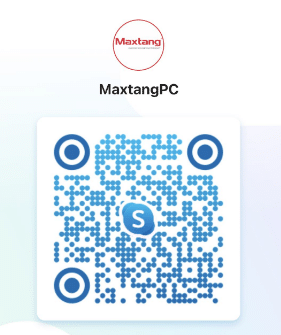TPD stands for “Total Productive Downtime”. It is the time a system or device does not work optimally or not at all. It can be planned or unplanned. This can result in reduced output, financial losses, and customer dissatisfaction.
Advanced monitoring tools and tech allow tracking and analysis of downtime. This helps identify areas for improvement and reduce future disruptions.
A study by Gartner Inc. shows IT downtime costs businesses an average of $5,600 per minute. This stresses the importance of effectively managing TPD to avoid financial risks and ensure smooth operations.
What is TPD?
To understand TPD in computing, delve into its definition and explanation, as well as the importance it holds in the field. This section explores the key aspects of TPD, providing insights into its meaning and significance within the realm of computing.
Definition and Explanation of TPD
TPD stands for Total and Permanent Disability. It is a condition that stops an individual from working and earning money. It is essential to understand the definition and explanation of TPD, in order to protect oneself.
Here is a table for a better understanding of TPD:
| Description | |
|---|---|
| Meaning | Total and Permanent Disability |
| Definition | Condition preventing an individual from working |
| Importance | Protects individuals financially in case of disability |
| Coverage | Varies depending on each insurer |
Let’s look at some unique details about TPD. It can be categorized as either “own occupation” or “any occupation”. Own occupation covers people who can’t do their job due to disability, while any occupation covers those unable to work in any way.
For an example, consider John. He was an IT professional, who had a severe accident, leaving him paralyzed. He couldn’t work anymore. Fortunately, he had taken out TPD insurance earlier, which provided him financial aid to recover.
By understanding TPD, individuals can make wise decisions regarding their insurance. Coverage options and terms should be carefully reviewed, in order to ensure protection in hard times.
Importance of TPD in Computing
TPD is key in computing. It allows for better management of multi-threaded applications, resulting in faster performance and a better experience.
TPD distributes thread pools between processors and cores. This clever allocation ensures each resource is used optimally, lessening idle time and maximizing output. This leads to improved system performance.
TPD also balances the load. It changes the distribution of thread pools, based on the workload and available resources. This adaptive strategy means tasks are evenly spread, avoiding overloading or underutilization of resources. Therefore, the system stays responsive during peak times.
To make the most out of TPD, here are some tips:
- Optimizing task granularity is important. Breaking down tasks into smaller parts allows for better load balancing and more parallelism.
- Utilizing workload prediction algorithms can predict future resource needs and change thread pool distribution.
Lastly, adopting a feedback mechanism to monitor system performance can offer useful insights for optimizing TPD strategies. By analyzing response times and throughput rates in real-time, tweaks can be made to keep performance optimal.
TPD in Different Computing Areas
To understand TPD in different computing areas, delve into the fascinating realms of hardware, software, and network systems. Discover how TPD plays a vital role in optimizing performance, improving efficiency, and enhancing overall functionality in these realms. Unveil the intricate connections between TPD and its applications within each domain.
TPD in Hardware
Exploring TPD in hardware? Let’s look at a table that reveals the TPD values of different computing areas.
| Component | TPD (Watts) |
|---|---|
| Central Processing Unit (CPU) | 65W |
| Graphics Processing Unit (GPU) | 150W |
| Random Access Memory (RAM) | 10W |
| Solid State Drive (SSD) | 5W |
Remember, these figures can change depending on model and config. Plus, using cooling solutions like heatsinks or liquid cooling can reduce the TPD.
Pro Tip – Considering hardware TDP ratings helps you pick components that work with your power supply and cooling solutions.
TPD in Software
In the software world, TPD (Technical Product Documentation) is a must-have. It gives users, developers, and other stakeholders comprehensive information. This helps them to comprehend the software’s functionalities, elements, and technical components.
The following table showcases key aspects of TPD:
| Key Aspects | Importance | Description |
|---|---|---|
| User Manuals | High | Detailed guides about software installation, configuration, and usage. |
| API Documentation | Medium | Documentation of application programming interfaces (APIs), which helps to integrate with other software systems. |
| Release Notes | Low | Short descriptions of new features, bug fixes, and known issues in each software release. |
| Troubleshooting Guides | High | Steps to diagnose and resolve common issues or errors faced by users. |
| Installation Guides | Medium | Instructions for putting the software on different platforms or operating systems. |
The TPD in software lets developers express technical concepts without confusing users. It guarantees that end-users are provided with clear instructions for installation, configuration, and usage. Plus, API documentation aids developers to use existing codebases and combine various software systems without difficulty.
It is interesting that well-documented software products usually have lower support costs and higher user satisfaction rates. As per a survey conducted by TechSmith Corporation in 2020, 89% of respondents said they would use a product more if it had good documentation.
TPD in Network Systems
TPD in Network Systems has various aspects and considerations. Let’s look into this further.
For optimal performance, bandwidth allocation is key. Plus, real-time traffic management is important.
Security needs to be considered too. Firewall configurations and Intrusion Detection Systems are a must.
Also, Load Balancing Algorithms and Virtual Private Networks are needed for scalability.
TPD is essential for efficient data transmission and resource utilization in networks.
Did you know the concept of TPD started in the early 2000s? With advancing tech, it became necessary to maintain network efficiency and security.
Challenges and Limitations of TPD in Computing
To navigate the challenges and limitations of TPD in computing, immerse yourself in its technical complexities and ethical and legal considerations. Explore the technical challenges that TPD presents, as well as the ethical and legal dimensions that must be carefully addressed.
Technical Challenges
Let’s explore the technical challenges in computing through a table:
| Challenge | Description |
|---|---|
| Scalability | Handling increasing amounts of data and users. |
| Security | Protecting data from unauthorized access. |
| Compatibility | Making sure hardware and software work together. |
| Performance | Optimizing system speed and responsiveness. |
| Reliability | Minimizing downtime and errors. |
Each challenge needs unique solutions. E.g. Scalability needs scalable designs, and Security requires encryption or multifactor authentication.
Professionals in computing must stay up-to-date with these challenges. This helps ensure better user experiences, better data protection, improved system performance, compatibility, and reliability.
Ethical and Legal Considerations
When it comes to the ethical and legal aspects of TPD in computing, we must consider:
| Ethical and Legal Considerations |
|---|
| Data Privacy |
| Intellectual Property Rights |
| Cybersecurity |
| Accountability |
Apart from these, there are other noteworthy details that make up ethical and legal considerations in TPD. These include consent for data collection and usage, potential bias in algorithms, and organizations’ responsibility for transparency and explainability.
To tackle these challenges, some suggestions can be made. Firstly, organizations should have robust data protection policies that prioritize users’ privacy rights. Audits should be done to make sure they comply with laws and regulations. Secondly, developers should design algorithms that are free from bias or discrimination. This can be achieved through diverse teams working on AI development.
Moreover, transparency should be a key principle in deploying TPD systems. People should know how their data is collected and used. Lastly, individuals should have access to redress if their rights have been violated by a TPD system.
By following these suggestions, organizations can manage ethical and legal considerations in TPD, while gaining trust from users and stakeholders. It’s important to prioritize these considerations to ensure responsible development and deployment of TPD technologies.
Advancements in TPD in Computing
To understand advancements in TPD in computing, dive into the section ‘Advancements in TPD in Computing’ with a focus on ‘Emerging Technologies and Innovations’ and ‘Potential Future Impacts of TPD.’ Discover the cutting-edge developments and explore the potential ramifications of TPD in the exciting world of computing.
Emerging Technologies and Innovations
Artificial Intelligence (AI) is a promising emerging tech. Machines can act like humans and do tasks once thought only possible by humans. It has applications in healthcare, finance, and transport.
Quantum computing is also a new development. It uses quantum mechanics to do calculations super quick. It could lead to new discoveries in drug finding, cryptography, and optimization.
Blockchain is a game-changer. It was used for crypto transactions like Bitcoin, but now it is used for decentralized platforms that ensure security and transparency. It can be used in supply chain management, health data sharing, and voting systems.
Virtual Reality (VR) is another tech. It uses headsets or devices to create realistic digital experiences. It is already in gaming and entertainment, but it has potential for education and training simulations.
Businesses need to use these new technologies to stay competitive. Challenges exist with privacy, ethical issues, and regulations. But they have the power to change the world.
Gartner reports that global spending on AI will reach $110 billion by 2024.
Potential Future Impacts of TPD
TPD presents us with huge possibilities. Let’s get an insight with this visual:
| Potential Future Impacts of TPD |
|---|
| Increased Processing Speed |
| Enhanced Data Storage capacity |
| Efficient Energy Consumption |
These are just a few of TPD’s incredible benefits. With its help, processing speed can be optimized. It enables us to store more data and make complex calculations. Plus, TPD lowers the energy consumption of computing tech, helping us protect the environment.
Conclusion
Understanding TPD or Third Party Disclosure in computing is critical. It’s about sharing data with external sources. To protect data from breaches and unauthorized access, one needs to set rules and protocols for data sharing. This includes knowing which types of data can be shared, who can access it, and under what conditions. Encryption and security measures must also be employed.
It’s likewise imperative to be aware of legal aspects of TPD. Different countries have different laws on data privacy and protection. Being familiar with these laws is necessary to avoid legal repercussions when sharing data with third parties.
Transparency is also a major factor in TPD. Both parties must comprehend why data is being shared and how it will be used. This builds trust and ensures that the shared info is managed responsibly.
In this digital age, understanding TPD in computing is more vital than ever. By employing proper protocols and adhering to legal requirements, individuals and organizations can protect their valuable data from unauthorized disclosure.
As per TechCrunch’s report, in 2020 alone, there were over 1,000 reported data breaches worldwide that could have exposed billions of records to hackers. This statistic shows the need for a thorough grasp of TPD in computing to protect ourselves from cyber threats.
Frequently Asked Questions
FAQ 1: What does TPD stand for in computing?
Answer: TPD stands for “Third-Party Data” in computing. It refers to the data generated and collected by external sources that are not directly involved in the primary operations of a computer system or application.
FAQ 2: How is TPD different from primary data?
Answer: TPD differs from primary data as it comes from external sources, while primary data is generated and collected directly by the computer system or application itself. TPD often includes user behavior data, consumer demographics, or data obtained through partnerships or APIs.
FAQ 3: What is the significance of TPD in computing?
Answer: TPD helps enhance the functionality and personalization of computer systems and applications. It provides valuable insights into user behavior, preferences, and patterns, enabling more targeted marketing, improved user experience, and better decision-making processes.
FAQ 4: How is TPD collected and stored?
Answer: TPD is collected through various methods such as cookies, log files, web trackers, or by integrating with third-party APIs. It is usually stored in secure databases or cloud-based systems, ensuring data privacy and security compliance.
FAQ 5: What are the potential risks associated with TPD?
Answer: The main risks of TPD include potential breaches in data privacy and security, as it involves sharing sensitive information with external sources. There is also a risk of relying solely on TPD without cross-validation, leading to biased or inaccurate results.
FAQ 6: How can companies ensure responsible use of TPD?
Answer: To ensure responsible use of TPD, companies should adhere to privacy regulations, obtain consent from users when collecting data, and implement robust security measures. Regular audits, data anonymization, and providing users with control over their data are also essential practices.

.jpg)


